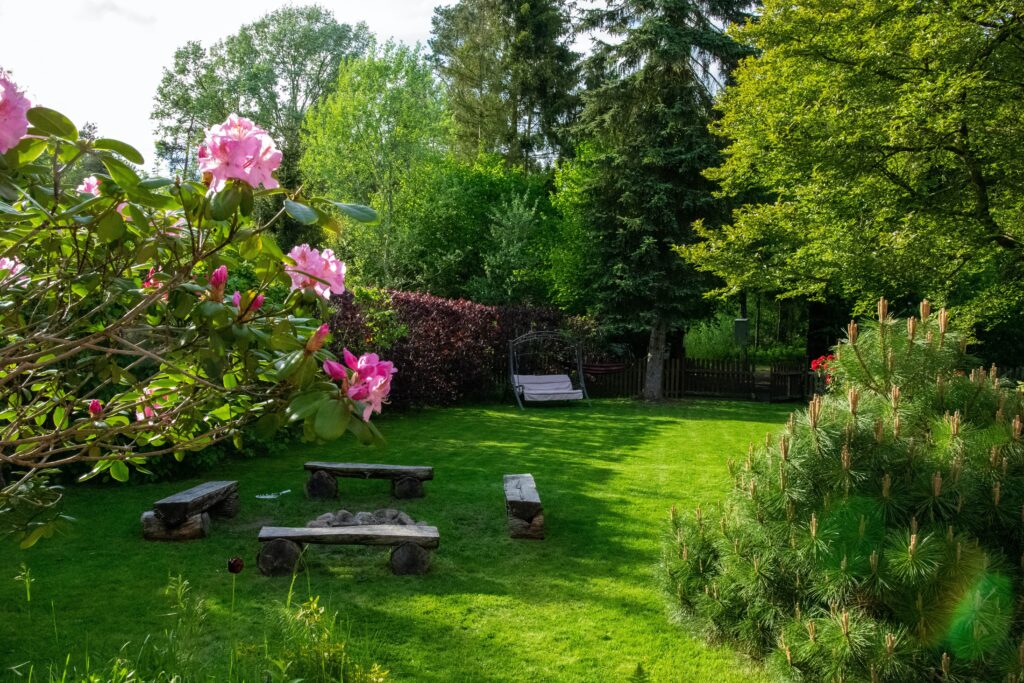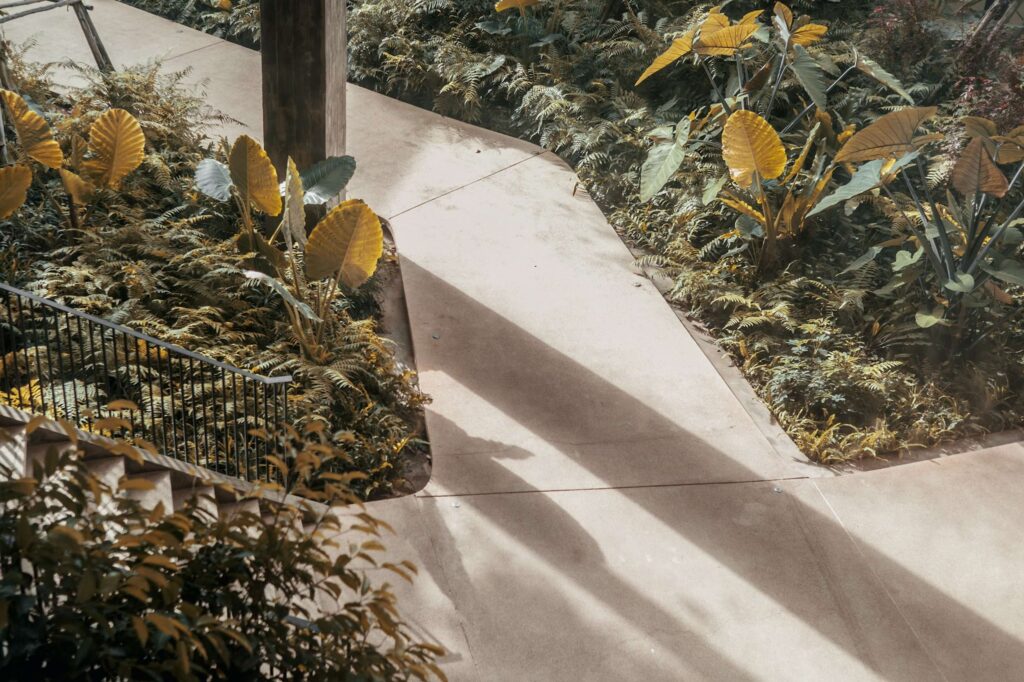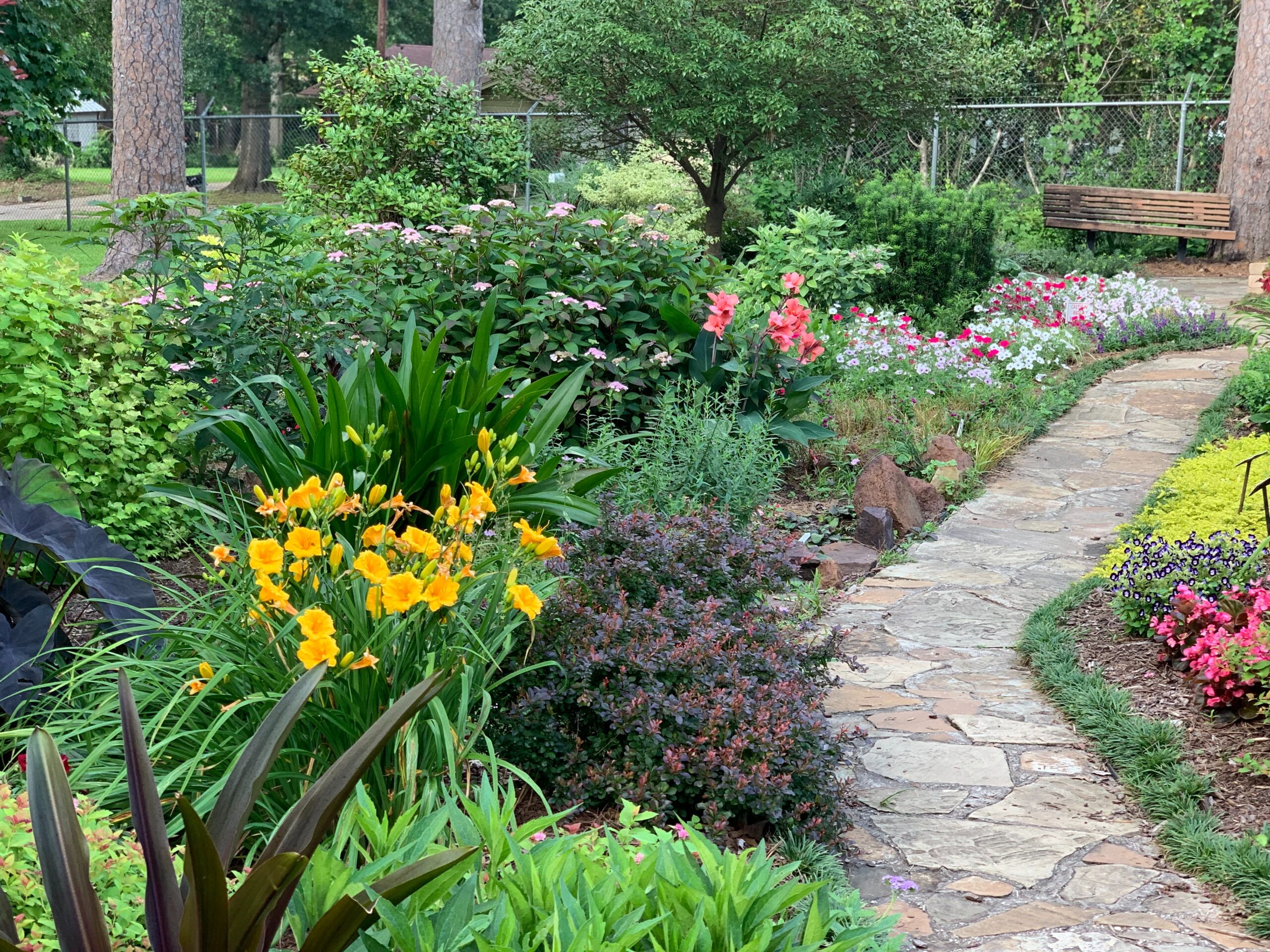Is your front yard a little small for most of the design tips on the internet? Some of us can’t fit a large front porch or water feature in our front yards, but that doesn’t mean there isn’t room to create something beautiful.
With a little landscape design know-how and a trip to a local nursery and rock quarry, you can create a stylish xeriscape that’s low-maintenance and oozes curb appeal.
Here are seven easy xeriscape ideas for a small front yard to help you make a big impact.
Table of Contents
Xeriscape Ideas For a Small Front Yard

To make the most of a small front yard, replace water-intensive grass with xeriscape plants, gravel, or other hardscaping materials that require little to no water. Creating a variety of textures and colours with native plants and mulch will also add visual interest to the space. Consider using paver patterns that allow rain to percolate into the soil and use high-coverage plants for added dimension.
- Start with a plan
Before you make any changes to your garden, assess your landscape features, including the sun’s orientation, topography, and soil type. These will all be important factors in what you plant, where you plant, and what kind of pants you include.
- Grab a cheap soil test online to check if you have acidic or basic soil.
- Use a free compass app to figure out the orientation of your garden (south-facing gardens get the most sun).
- Make a note of any slopes, gradients, shady areas, or other features that can affect your landscaping ideas.
The more you can plan out in advance, the easier it will be to come up with xeriscape ideas for your small front yard.
- Choose appropriate plants
All the plants you choose need to be drought-tolerant, like succulents, cacti, and ornamental grasses. Native species are always best because they are acclimated to your region. Non-natives (even drought-tolerant varieties) may be invasive and can struggle with certain soil conditions.
- Use hardscaping elements
The easiest way to create a professional-looking xeriscape is to include hardscaping elements. Think about incorporating gravel, boulders, a patio, or sculpture to give your xeriscaped yard interest.
Even if you don’t have room for anything else, plan a walkway through your yard leading to your front door to create easy access and funnel traffic into your house.
- Add water features
Although you’re creating a xeriscape, that doesn’t mean you can’t add a water feature. A small fountain, bird bath, or natural pond will attract wildlife and add a calming ambiance to your front yard. Just make sure it is a small feature to minimize the amount of water it needs to function.
- Optimize your irrigation system
If you’re including plants in your xeriscape, you’ll need a watering system to keep them alive. Many homeowners are happy to water manually with a hosepipe or water can, but you could think about installing a drip irrigation system or rain barrels to conserve water and reduce your utility bill.
A drip irrigation system can be expensive, but rain barrels are a cheap and easy way to make the most of any rain you do have.
- Create zones
Even if you have a tiny fron yard, split it up into zones to make it easier to design. Here are some zoning ideas you could include:
- A walkway
- A flowerbed
- A rock feature
- A seating area
- A kid’s play area
The zones you choose will depend on your style and needs, but it’s the easiest way to create a well-designed xeriscape that looks intentional.
- Use lighting
Lighting is often forgotten about in xeriscape landscaping, but it can bring the entire design together. Here are a few expert ways to include lighting in your xeriscape front yard:
- Use uplighting to highlight larger plants or garden features.
- Line walkways with solar lights for better visibility at night.
- String fairy lights for a cozy cottage vibe.
- Add lighting to the front door to highlight the entrance and draw people in.
Choosing Plants for Xeriscaping Small Front Yards

Choosing the right plants for a small xeriscape takes some planning, so here are four things to think about.
Importance of selecting drought tolerant plants
Anything other than drought tolerant plants will die pretty quickly in a xeriscape. There just isn’t enough water available to support regular plants.
Drought-tolerant plants often have deep roots that can access groundwater, and they are tolerant to more extreme heat.
Luckily, there are plenty of drought-tolerant plants to choose from, and if you live in an arid climate, you likely have endless native species at your local nurseries.
Native plants vs. non-native plants
Native species always thrive best, whatever region you might live in. That said, you’ll be able to find tons of non-native plants that will also work well in a xeriscape.
The key is finding the right plants for your needs. Many non-native plants are invasive and can quickly kill off their native counterparts. And don’t forget: local wildlife thrives best on native species.
Do some research to find out which drought-tolerant plants are native to your region, and see if you can find any at local nurseries. If you are going to go for non-natives, just make sure they’re not invasive and will do well with your soil and climate conditions.
Low-water-use plants
Just because plants are drought-tolerant doesn’t necessarily mean they are low-water-use. Some plants can handle drought conditions without dying but do need regular water to thrive.
If you live in an area with very little rainfall or hosepipe bans, find plants that require minimal watering to grow and thrive.
Ornamental grasses and succulents

We love ornamental grass and succulents for xeriscape small front yards. They are low-maintenance, low-water-use, and thrive in dry conditions. Here are a few popular types to get you started:
- Agave attenuata
- Aeonium arboreum
- Echeveria topsy turvy
- Senecio mandraliscae
- Blue grama
- Prairie dropseed
- Switchgrass
Designing a Xeriscape for Small Front Yards
So how do you put all of your xeriscape ideas for a small front yard into a cohesive landscape design?
Start with Hardscaping
Start by sketching out any hardscaping elements for your front yard. Whether this is a patio, deck, path, or rock garden, this will be the focal point that you build the rest of your design around.
Drop in your plants
Once you know which spaces will be filled with hardscaping, add softscaping around it. This could be flowerbeds, ground-covering plants, or a few ornamental grasses dotted around.
Don’t forget to mulch
Wherever you have established plants in your front yard xeriscape, add a thin layer of organic mulch. This locks in moisture, keeps the ground temperature low, and adds nutrients to dry soil.
The best xeriscaping mulch options are bark, pea gravel, and pine needles, depending on your style and soil content.
Plan for irrigation
A drip irrigation system is easy to install and eliminates the need for manual watering. When planning your xeriscape, group plants together for water conservation, and think about installing a rainwater barrel to make use of natural runoff.
Enjoy Your New Xeriscape
Even the smallest front yards can be transformed into beautiful xeriscapes with a little planning. All you need is a few rocks, a pathway, and some drought-tolerant plants, and you’ll have a pretty front yard that requires minimal maintenance or water.
The key is to find local resources. Native plants and local natural stone instantly add curb appeal and make a xeriscape look professionally designed, even if you’re on a tight budget.

